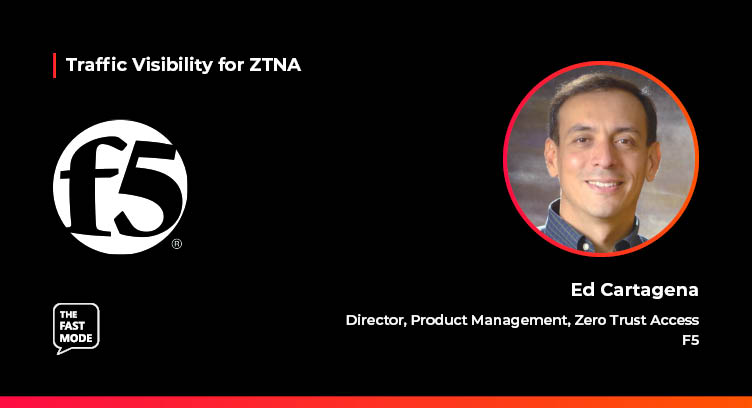The Fast Mode spoke to Ed Cartagena, Director of Product Management for Zero Trust Access at F5 on the impact of traffic visibility on ZTNA networks. Ed joins us in a series of discussions with leading cybersecurity and networking vendors, assessing the evolution of ZTNA technologies, the roadmap for ZTNA deployments, the benefits of ZTNA for enterprise and telco networks, and the need for real-time traffic visibility technologies such as DPI for ZTNA.
Ariana: How has ZTNA evolved over the years?
Ed: When first developed, ZTNA focused on securing access for remote workers to mostly web- and cloud-based applications. Most organizations now though have adopted hybrid work, with workers splitting time between in-office and remote work; and while they have many multiple cloud-based apps and workloads, they also have many apps and workloads that cannot or will not soon be migrated to the cloud. Enter Universal ZTNA, coined by Gartner, which defends apps and workloads located anywhere, as well as applied consistent policies automatically regardless of where the user is attempting access from. Optimally, Universal ZTNA delivers a unified policy that protects the overall security posture of remote workers and campus workers while delivering a common experience for end-users wherever they choose to work.
Ariana: How important is traffic visibility for ZTNA vendors?
Ed: Most traffic today is encrypted; and encrypted traffic continues to be leveraged by attackers to spread malware and to launch attacks, like ransomware. Traffic visibility, especially into encrypted traffic, as well as traffic inspection and orchestration, is a security imperative, particularly for ZTNA, which was developed to ensure threats couldn’t be spread laterally within an environment. Traffic visibility also enables ZTNA to determine a secure baseline for traffic, inspection enables anomalous traffic detection, and orchestration allows for optimum handling of infected traffic, which can also ensure that appropriate identity- and context-aware policies are applied to similar traffic patterns, effectively stopping anomalous and potentially dangerous traffic at entry.
Ed oversees a portfolio of F5 security products including BIG-IP APM & SSLO, BIG-IP Next Access & Next SSLO, and Universal ZTNA. Prior to F5, he held various IT and Product Management leadership positions at SAP, Autodesk, and Honeywell. Ed has a business bachelor's from San Jose State University and an MBA from Golden Gate University. He enjoys spending time with his family, running, hiking, and discovering Brazilian restaurants.
This interview is a part of The Fast Mode's Next-Gen DPI Traffic Visibility for ZTNA segment, featuring over 40 leading cybersecurity and networking solution providers and their views on the importance of traffic visibility for ZTNA. A research report on this topic will be published in January 2024 - for more information, visit here.


















